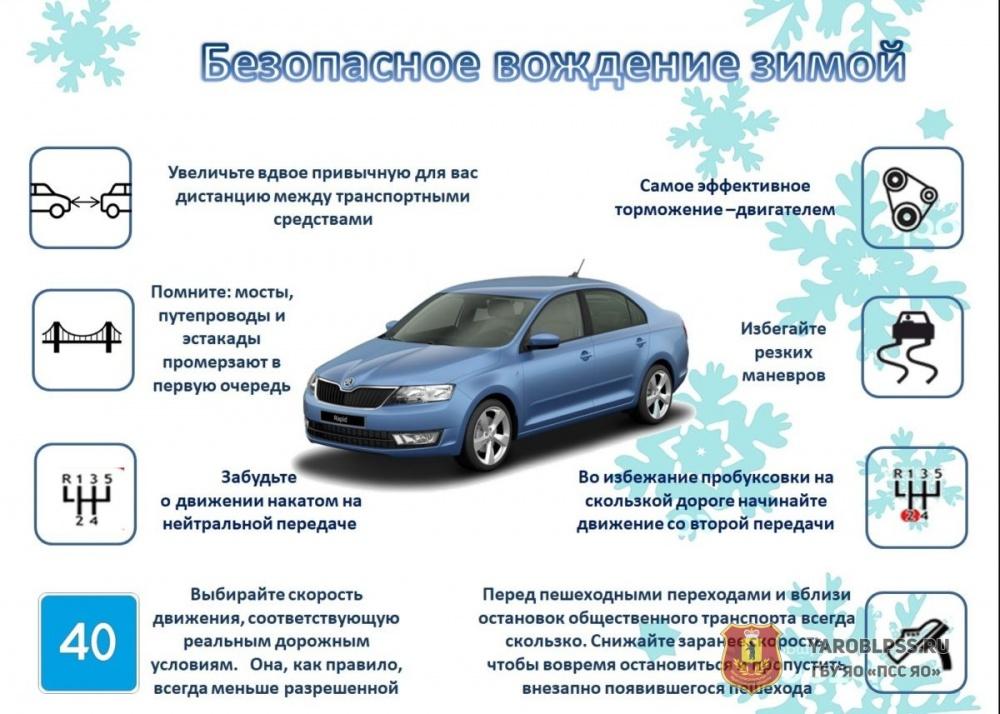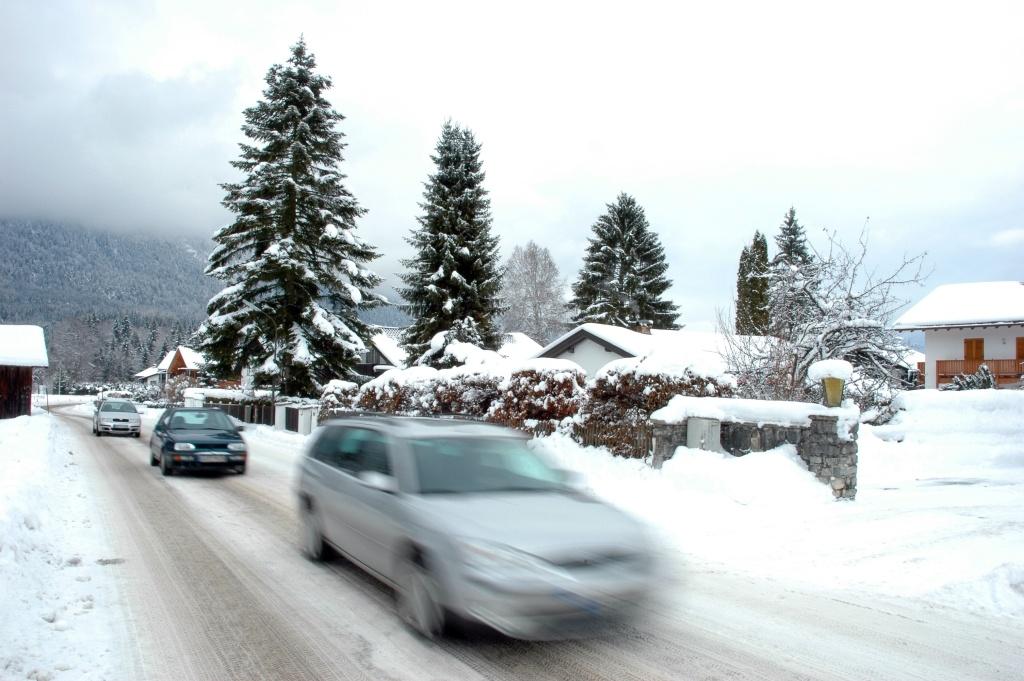
How to drive safely in winter?
 Winter is the time of year when drivers need to be extra careful while driving. Even the safest car equipped with the best winter tires should not lull your common sense.
Winter is the time of year when drivers need to be extra careful while driving. Even the safest car equipped with the best winter tires should not lull your common sense.
Main questions
What should not be reminded to any good driver, although in  it is worth repeating the forgetfulness of the daily driving regimen. Of course, winter tires are the basis. Everyone is aware of the difference in driving and the safety issues that come with it. The rubber compound and tread of winter tires are very different from summer tires. Be sure to check the radiator fluid level, brake system, battery condition, and washer fluid condition before winter driving. While most motor oils are suitable for year-round driving, it is worth considering changing the oil to winter oil, which will make it easier to start the engine in cold conditions. This is especially recommended for drivers who park their car "under the open sky". Also check the heated and defrostered windscreen to remove ice and steam from the windshield and rear windows. Don't forget the ice scraper and check the condition of the wipers.
it is worth repeating the forgetfulness of the daily driving regimen. Of course, winter tires are the basis. Everyone is aware of the difference in driving and the safety issues that come with it. The rubber compound and tread of winter tires are very different from summer tires. Be sure to check the radiator fluid level, brake system, battery condition, and washer fluid condition before winter driving. While most motor oils are suitable for year-round driving, it is worth considering changing the oil to winter oil, which will make it easier to start the engine in cold conditions. This is especially recommended for drivers who park their car "under the open sky". Also check the heated and defrostered windscreen to remove ice and steam from the windshield and rear windows. Don't forget the ice scraper and check the condition of the wipers.
Mandatory winter tires
It is good to know, especially now during the winter holidays, when many people go abroad for their winter holidays, that winter tires are mandatory in some European countries. – In Germany, the Czech Republic, Slovakia, Austria, Croatia, Slovenia, Romania, Sweden, Norway, Finland, Lithuania, Latvia and Estonia, winter tires are mandatory during the season. There are some differences in terms of order fulfillment in the mentioned countries. On the other hand, in Spain, France, Switzerland, Italy, Serbia, Montenegro, Bosnia and Herzegovina, mandatory winter tires are required in special situations, depending on the aura, explains Justina Kachor from Netcar sc.
Correct distance
The correct distance to the vehicle in front is important not only in winter. However, at this time of the year it should be adhered to much more strictly. This distance must be at least twice. All this in order to have as much time and space as possible in order to slow down or avoid them in time if a sharp maneuver is required when the car in front of us skids, for example. If we hit the car in front, we can be sure that, in addition to the cost of repairing the wrecked cars, we will have to pay a fine.
In winter, we must change the principle of limited trust to the principle of no trust in other road users. We can never be sure how a car ahead of us or overtaking us will behave. Such advice should be taken into service and not overestimate your own capabilities. Even the best driver with many years of "winter experience" may not be able to cope with the situation of a sudden skid.
And finally, a simple but powerful tip when we want to get to our destination safely and on time: get off the road well in advance, remembering that we drive slower in winter. “Unfortunately, I myself have problems with this,” adds the representative of NetCar.pl with a smile.
How to slow down?
Stopping a car on slippery surfaces is much more difficult than braking on a dry road. The braking distance on an icy or snowy road is even several meters longer than when braking on dry pavement. This should be known to drivers of vehicles not equipped with ABS. For them, impulse braking is recommended. Pressing the brake pedal quickly on an icy surface will do nothing, and even aggravate the situation: we will completely lose control of the car. The situation is somewhat different on the surface covered with loose snow. Sudden braking may be more effective. But be careful: it is not always possible to be sure that under a thin layer of snow there is no layer of ice. If there is no wheel lock effect when braking, unlock them and try to drive around the obstacle.
– Drivers of vehicles with ABS, in a situation where they need to brake hard, should depress the brake pedal as quickly and strongly as possible. Thanks to ABS, the wheels do not lock, so braking occurs without skidding. Perform deceleration maneuvers early. It is recommended - especially for drivers of cars without ABS - engine braking, that is, forcing speed by downshifting, if, of course, this is possible, explains the owner of the NetCar website. Also good, again - if possible - slow down from time to time to check the slipperiness of the surface.
Dangerous places
– The most dangerous places to drive in winter are hills and curves. Areas such as bridges, intersections, traffic lights, and hills or sharp curves are the most common crash sites. They are the first to ice and remain slippery. When approaching a turn, you need to slow down much earlier than in summer. We do not slow down at idle, we reduce earlier and choose the correct track calmly, without sudden movements of the steering wheel, gas or brake pedal. Having straightened the wheels, we are gradually accelerating, adds Justyna Kachor.
When the car skids, you should not panic in the first place, because this will not help. Pressing the brake pedal usually does nothing either. Then you should release the brake and depress the clutch pedal, usually in this situation the car regains steering control. If you lose control of the front axle, first take your foot off the gas. If necessary, you can lightly press the brake pedal without blocking, however, the wheels.
In the event of a loss of traction on the rear axle of a front-wheel drive vehicle (while maintaining traction on the front axle), it is recommended to add a little gas to restore the balance of the car. In a rear wheel drive vehicle, take your foot off the gas pedal slightly until the vehicle regains traction. Then slowly accelerate to the appropriate speed.
In no case do not slow down, as this will worsen the situation. We make an oncoming lane, i.e. we turn the steering wheel in the direction in which the rear of the car was thrown in order to set the wheels in the intended direction of movement.
Common sense and lack of bravado
Summing up the reasoning about winter driving, it is worth emphasizing once again that there are no ideal ways to drive safely. However, we can improve our security by following a few tips. In winter, we drive slower and more intelligently. Because? Of course, no one will give a specific speed here. It is only a matter of having time to maneuver in advance, because unpredictable situations often occur on slippery surfaces. We perform each maneuver behind the wheel without sudden movements, we drive at an appropriate distance in relation to the car in front. When descending a hill, let's move in a lower gear. We moderately use the accelerator and brake pedals, and before entering the turn we slow down earlier than usual. If we have the opportunity, it is worth practicing in winter conditions to see how the car behaves when skidding. Behind the wheel, we think, we try to predict the behavior of other drivers, and hence the behavior of their cars. However, first of all, let's not be afraid to drive in winter. After all, practice makes perfect.